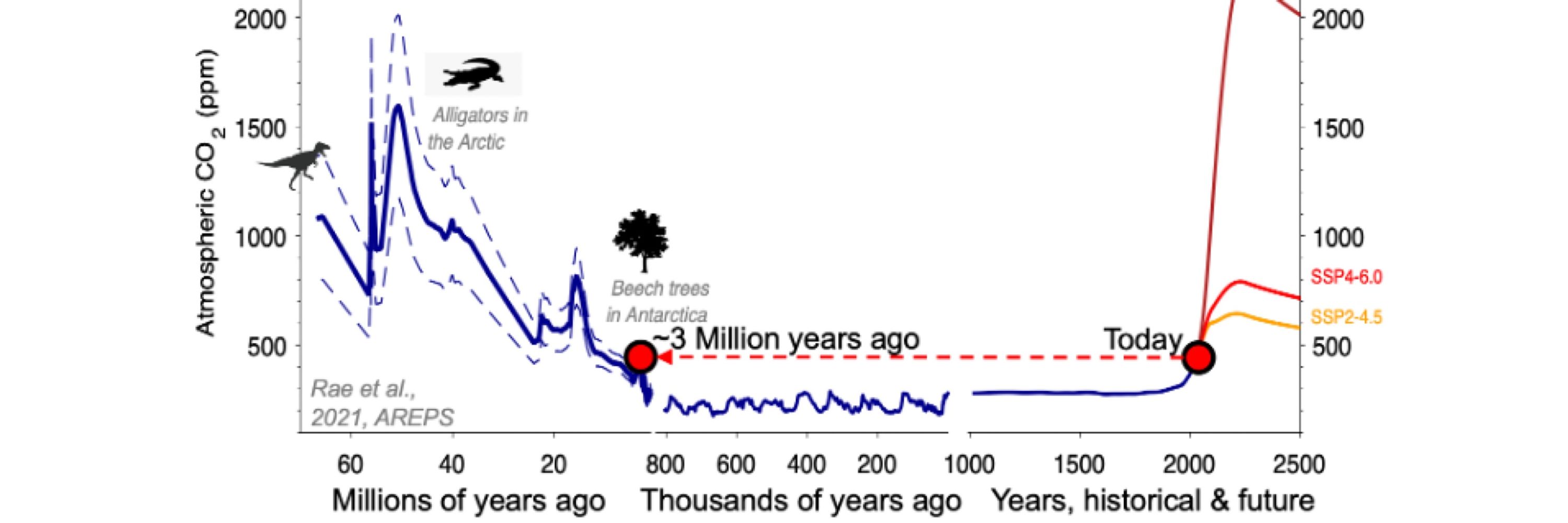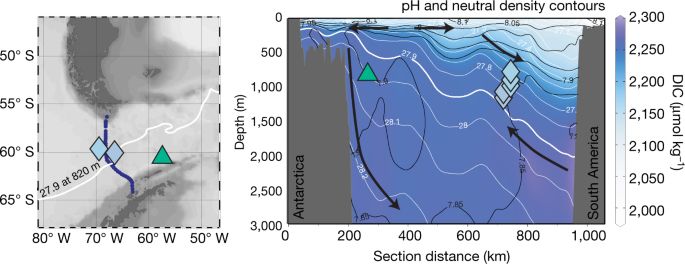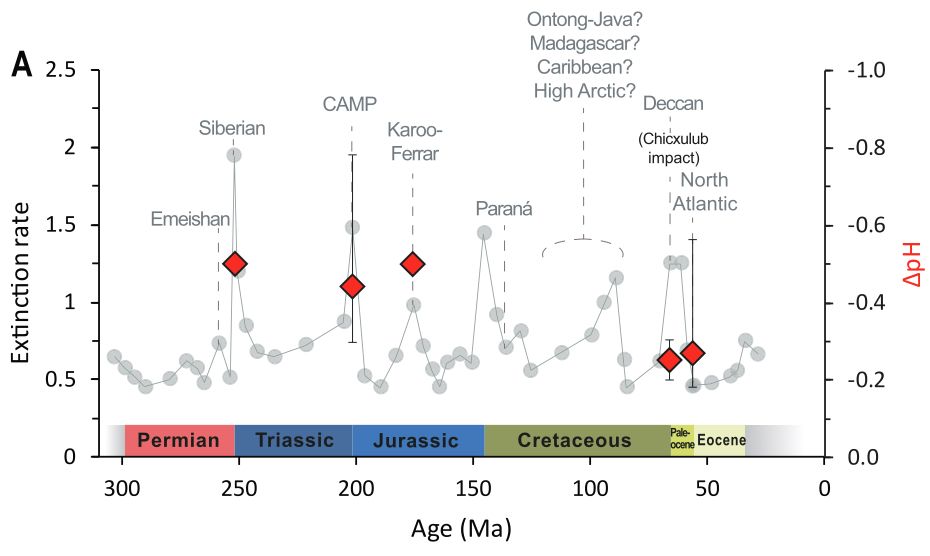
James Rae
@mudwaterclimate.bsky.social
Climate scientist and geochemist
@UnivofStAndrews
| CO2 & ocean circulation past & present | Social & Environmental justice
@UnivofStAndrews
| CO2 & ocean circulation past & present | Social & Environmental justice
Sure! And great work @jfarmersalmanac.bsky.social and @oceanandclimate.bsky.social for the fascinating paper and threads!
October 3, 2025 at 5:08 AM
Sure! And great work @jfarmersalmanac.bsky.social and @oceanandclimate.bsky.social for the fascinating paper and threads!
Kudos to Maddie for leading this work and many thanks to @willerstorfi.bsky.social @gmacgilchrist.bsky.social @oceanicandrea.bsky.social Casimir de Lavergne & Laurie Menviel for all their help and input, @uniofstandrews.bsky.social for funding Maddie’s PhD, and all of you for reading!
September 17, 2025 at 5:50 PM
Kudos to Maddie for leading this work and many thanks to @willerstorfi.bsky.social @gmacgilchrist.bsky.social @oceanicandrea.bsky.social Casimir de Lavergne & Laurie Menviel for all their help and input, @uniofstandrews.bsky.social for funding Maddie’s PhD, and all of you for reading!
We are psyched about this as the ice ages are cool (sorry!) - but also as figuring out these processes by which the ocean took up 100s of gigatonnes of CO2 from the atmosphere in the past may help us better understand the controls on its capacity for carbon uptake in the future… 📈🌊
September 17, 2025 at 5:50 PM
We are psyched about this as the ice ages are cool (sorry!) - but also as figuring out these processes by which the ocean took up 100s of gigatonnes of CO2 from the atmosphere in the past may help us better understand the controls on its capacity for carbon uptake in the future… 📈🌊
This likely acted in concert with other processes (changes in winds, circulation, sea ice, iron) to draw down CO2 during the ice ages.
It can also explain why biogeochemical records from the North Pacific and Southern Ocean share similar structure (Haug & Sigman‘s “polar twins” 👯)
It can also explain why biogeochemical records from the North Pacific and Southern Ocean share similar structure (Haug & Sigman‘s “polar twins” 👯)

September 17, 2025 at 5:50 PM
This likely acted in concert with other processes (changes in winds, circulation, sea ice, iron) to draw down CO2 during the ice ages.
It can also explain why biogeochemical records from the North Pacific and Southern Ocean share similar structure (Haug & Sigman‘s “polar twins” 👯)
It can also explain why biogeochemical records from the North Pacific and Southern Ocean share similar structure (Haug & Sigman‘s “polar twins” 👯)
Notably, this is achieved without any change in Southern Ocean upwelling, sea ice or iron supply - it’s simply the result of having less carbon in the upwelled water.

September 17, 2025 at 5:50 PM
Notably, this is achieved without any change in Southern Ocean upwelling, sea ice or iron supply - it’s simply the result of having less carbon in the upwelled water.
The consequence - shown here - is that less CO2 would be delivered to the Southern Ocean. This by itself reduces Southern Ocean CO2 outgassing by as much as 50%.

September 17, 2025 at 5:50 PM
The consequence - shown here - is that less CO2 would be delivered to the Southern Ocean. This by itself reduces Southern Ocean CO2 outgassing by as much as 50%.
In previous papers we and others have shown that these intermediate depth N Pacific waters were better ventilated during glacial periods (e.g. figure here from Rae 2020 and see also Rafter 2022 and Keigwin 1998 among others!) www.science.org/doi/full/10....

September 17, 2025 at 5:50 PM
In previous papers we and others have shown that these intermediate depth N Pacific waters were better ventilated during glacial periods (e.g. figure here from Rae 2020 and see also Rafter 2022 and Keigwin 1998 among others!) www.science.org/doi/full/10....
Part of the inspiration for this study was an interesting paper by Haidi Chen showing that much of the CO2 outgassed in the Southern Ocean today is sourced from the intermediate depth North Pacific. As these waters are old and CO2 rich they have huge outgassing potential (red colours below).

September 17, 2025 at 5:50 PM
Part of the inspiration for this study was an interesting paper by Haidi Chen showing that much of the CO2 outgassed in the Southern Ocean today is sourced from the intermediate depth North Pacific. As these waters are old and CO2 rich they have huge outgassing potential (red colours below).
Nice one John - see also additional notes in thread below: bsky.app/profile/mudw...
It’s a pretty basic misrepresentation- they use our paper to suggest ice age ocean was more acidic, but we show this was only true for deep Southern Ocean, while upper ocean (much more relevant for OA-sensitive ecosystems) had higher pH! www.nature.com/articles/s41...

CO2 storage and release in the deep Southern Ocean on millennial to centennial timescales - Nature
Analysis of deep-sea coral boron isotope data, as a proxy for pH and thus CO2 chemistry, provides evidence of CO2 storage in the deep Southern Ocean during the last ice age, and its rapid release on m...
www.nature.com
August 4, 2025 at 10:18 AM
Nice one John - see also additional notes in thread below: bsky.app/profile/mudw...
More relevant for fossil fuel CO2 are rapid external carbon additions from large igneous provinces and the organic material they often burn up - consistently linked to mass extinction in the geological record www.nature.com/articles/s41...

August 4, 2025 at 10:05 AM
More relevant for fossil fuel CO2 are rapid external carbon additions from large igneous provinces and the organic material they often burn up - consistently linked to mass extinction in the geological record www.nature.com/articles/s41...
These sorts of relatively slow reshufflings of carbon around the ocean also aren’t a relevant analogue for very rapid addition of carbon from an external source: in former case saturation state changes are muted, while with FF addition saturation state drops sharply www.science.org/doi/10.1126/...

The Geological Record of Ocean Acidification
As human activity continues to pump nearly 50-fold more CO2 into the atmosphere than any existing natural sources, the oceans absorb it. Over time, this vast quantity of excess oceanic CO2 is expected...
www.science.org
August 4, 2025 at 10:05 AM
These sorts of relatively slow reshufflings of carbon around the ocean also aren’t a relevant analogue for very rapid addition of carbon from an external source: in former case saturation state changes are muted, while with FF addition saturation state drops sharply www.science.org/doi/10.1126/...
It’s a pretty basic misrepresentation- they use our paper to suggest ice age ocean was more acidic, but we show this was only true for deep Southern Ocean, while upper ocean (much more relevant for OA-sensitive ecosystems) had higher pH! www.nature.com/articles/s41...

CO2 storage and release in the deep Southern Ocean on millennial to centennial timescales - Nature
Analysis of deep-sea coral boron isotope data, as a proxy for pH and thus CO2 chemistry, provides evidence of CO2 storage in the deep Southern Ocean during the last ice age, and its rapid release on m...
www.nature.com
August 4, 2025 at 10:05 AM
It’s a pretty basic misrepresentation- they use our paper to suggest ice age ocean was more acidic, but we show this was only true for deep Southern Ocean, while upper ocean (much more relevant for OA-sensitive ecosystems) had higher pH! www.nature.com/articles/s41...
Add me to the list! Rae 2018 misrepresented on page 7: we show deep ocean pH rose out of the ice - but surface ocean pH (the more relevant property for the vast majority of marine life) fell!
Please see thread below on catastrophic impact of geological pH change: bsky.app/profile/mudw...
Please see thread below on catastrophic impact of geological pH change: bsky.app/profile/mudw...
These data demonstrate that ocean acidification is associated with all of the major mass extinctions where we currently have pH reconstructions. The TJ pH drop is similar to possible scenarios in 2100 unless fossil fuel emissions are rapidly reduced. 🐚🌊📉.

July 30, 2025 at 8:58 PM
Add me to the list! Rae 2018 misrepresented on page 7: we show deep ocean pH rose out of the ice - but surface ocean pH (the more relevant property for the vast majority of marine life) fell!
Please see thread below on catastrophic impact of geological pH change: bsky.app/profile/mudw...
Please see thread below on catastrophic impact of geological pH change: bsky.app/profile/mudw...
Finally for anyone needing a boost on climate progress in light of record temperatures and an acidifying ocean, please check out this wonderful article by @billmckibben.bsky.social - the challenge is huge, but so is our progress www.newyorker.com/news/annals-... 🧪💡🔌⚡️☀️

4.6 Billion Years On, the Sun Is Having a Moment
In the past two years, without much notice, solar power has begun to truly transform the world’s energy system.
www.newyorker.com
July 15, 2025 at 12:46 PM
Finally for anyone needing a boost on climate progress in light of record temperatures and an acidifying ocean, please check out this wonderful article by @billmckibben.bsky.social - the challenge is huge, but so is our progress www.newyorker.com/news/annals-... 🧪💡🔌⚡️☀️
Not dumb at all - today the open ocean has lots of tiny planktonic carbonate shells that coat the seafloor when they die. This acts as an anti-acid: CO2 addition is part neutralised by dissolving those shells. But they weren’t around yet in the Triassic/Jurassic.
July 15, 2025 at 4:04 AM
Not dumb at all - today the open ocean has lots of tiny planktonic carbonate shells that coat the seafloor when they die. This acts as an anti-acid: CO2 addition is part neutralised by dissolving those shells. But they weren’t around yet in the Triassic/Jurassic.
HUGE kudos to fantastic former @earthscista.bsky.social PhD student @mollytrudgill.bsky.social for leading this work, @carbonatefan.bsky.social for ushering us in to the rock record and being generally the best, and an amazing team including several @uniofstandrews.bsky.social BSc/MSc co-authors
July 15, 2025 at 3:57 AM
HUGE kudos to fantastic former @earthscista.bsky.social PhD student @mollytrudgill.bsky.social for leading this work, @carbonatefan.bsky.social for ushering us in to the rock record and being generally the best, and an amazing team including several @uniofstandrews.bsky.social BSc/MSc co-authors
These data demonstrate that ocean acidification is associated with all of the major mass extinctions where we currently have pH reconstructions. The TJ pH drop is similar to possible scenarios in 2100 unless fossil fuel emissions are rapidly reduced. 🐚🌊📉.

July 15, 2025 at 3:57 AM
These data demonstrate that ocean acidification is associated with all of the major mass extinctions where we currently have pH reconstructions. The TJ pH drop is similar to possible scenarios in 2100 unless fossil fuel emissions are rapidly reduced. 🐚🌊📉.

